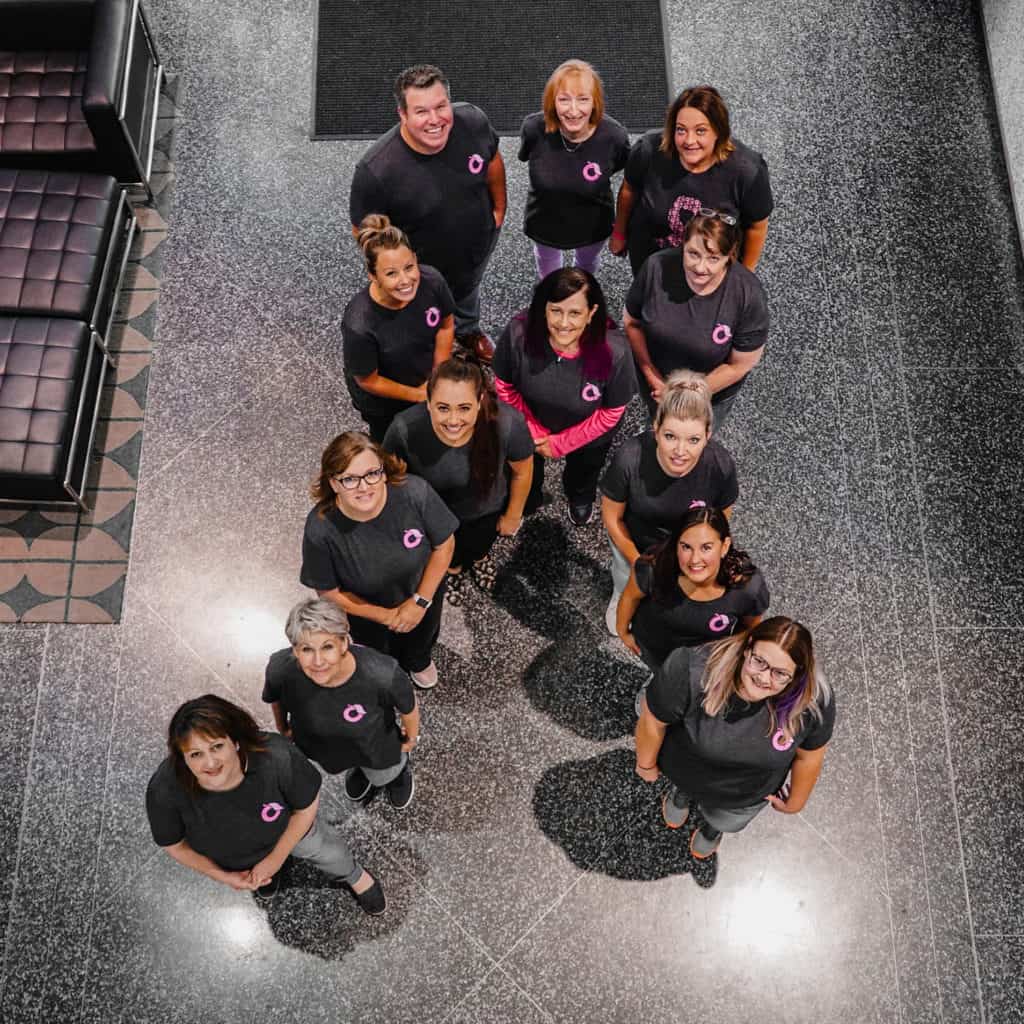An annual campaign to increase national awareness to breast cancer is held every October. Public events are held involving the Susan B. Komen organization, the American Cancer Society, and even the National Football League (NFL). Why all of the publicity?
FAST FACTS:
- In 2019, an estimated 270,000 new cases of invasive (spreading) and 63,000 of non-invasive (early) breast cancer will be diagnosed in women in the U.S.
- 62% of breast cancers are diagnosed at an early stage – which has an average 5-year survival rate of 99%.
- In 2019, an estimated 41,760 women will die from breast cancer in the U.S.
- Although rare, men can also get breast cancer. In the U.S., the lifetime risk of developing breast cancer is 1 in 1,000 males. An estimated 2,670 men will be diagnosed with breast cancer in 2019 and approximately 500 of these will die from the disease.
- Breast cancer is the most common type of cancer affecting American women except for skin cancer. On average, a woman is diagnosed with breast cancer every 2 minutes in the U.S.
- Currently, there are over 3.5 million breast cancer survivors in the U.S.
(Fast Facts are according to the National Breast Cancer Foundation, Inc. 2019)
What is cancer? Cancer can be simply described as abnormal cells that grow rapidly and spread to other organs in the body (think puffy-topped dandelions). Once the wind blows the dandelion seeds around your yard, new dandelions begin to grow. In a similar way, cancer cells spread throughout the body by traveling through the network of lymph nodes and vessels beginning to grow in various areas of the body. Eventually, these “metastases” will destroy cells, tissues, and organs in its path. Cancer doctors describe the amount of spreading the cancer has achieved by “staging” the cancer diagnosis (typically 0-5). A cancer that is staged at a 3 or 4 means that it has invaded into several areas or locations within the body. The greater the stage number, the more dangerous the cancer has become and the more lives it kills.
What are the signs of Breast Cancer you should be aware of? A breast lump or mass is just one of the potential signs of breast cancer in men OR women. Yes, I said MEN. Most people are unaware that men can develop breast cancer too. Not all patients with breast cancer actually notice a lump in their breast! Other physical findings may include: discharge from the nipple, breast or nipple pain, nipple retraction or inversion, swelling or redness of the breast tissue, changes to the breast skin’s texture (especially if it looks like an orange peel), or pain or swelling of the lymph nodes in your armpit. Anyone who notices ANY of these changes should see a doctor for evaluation. In some cases, breast cancer may not cause any symptoms at all. That is why women are encouraged to have an annual mammogram starting at age 40. It is also important to note that any of these symptoms could be caused by several non-cancerous diseases so it is important to have a thorough evaluation by your physician.
For those that want to know MORE*:
- Breast Cancer is among the most researched cancers in the world. A breast cancer diagnosis does not necessarily mean you will die from the disease. With early diagnosis, patients have a high success for a cure.
- “The first mention of cancer of any kind was a case of breast cancer documented in Egypt around 1600 BC. The Edwin Smith Papyrus, an ancient text found in 1860 in an Egyptian tomb, described eight cases of tumors or ulcers of the breast. The first doctors attempting to treat breast cancer wrote of the mysterious disease: ‘There is no treatment!’”
- Surgeon William Halsted performed the first mastectomy around 1882 removing both breasts, all local lymph nodes and underlying muscle tissue. This “radical” mastectomy was thought to be necessary to prevent cancer from returning…but left patients with permanent pain and disability in their arm and shoulder.
- Around 1970, doctors began performing the “lumpectomy”, a procedure that only removed the cancerous tumor and surrounding tissues affected by the cancer. Doctors found that combined with radiation treatments, patients had the same survival rates as those that had the radical mastectomy procedure. In addition, doctors also started to use radiation and chemotherapy (special chemicals to kill cancer cells) to shrink the tumor BEFORE performing the surgical procedure.
- In the late 1990’s, researchers found the presence of genes BRCA1 and BRCA2 were associated with an 80% increase in developing breast cancer. Women who had these gene mutations could take proactive steps to reduce their risk of cancer by having preemptive mastectomies (2013 Angelina Jolie had a double mastectomy for this reason – her mother died from breast cancer).
- In 2002, the results from the Women’s Health Initiative concluded that the usage of hormone replacement therapies significantly increased the risk of developing breast cancer.
- As research continues, doctors recommend that you eat a healthy diet, exercise regularly, maintain a normal weight, avoid alcohol, perform monthly BSE (Breast Self-Examinations), and (after the age of 40) have an annual mammogram.
*Information from Breastcancer.org and HealthCentral.com









